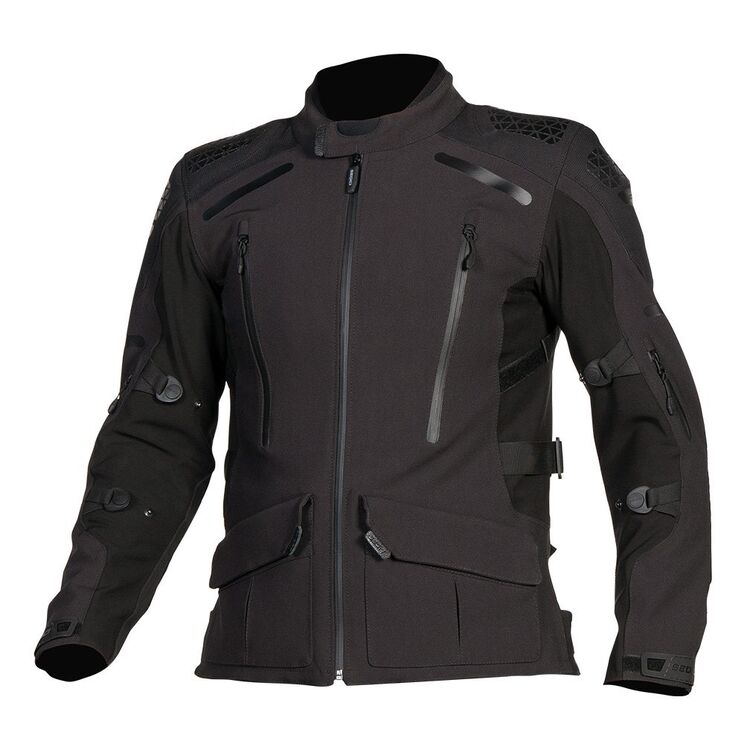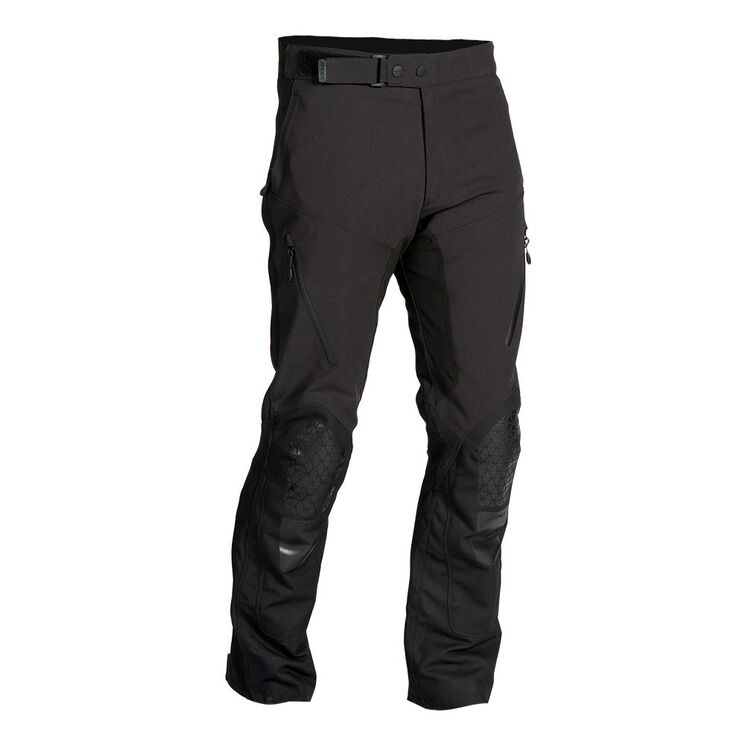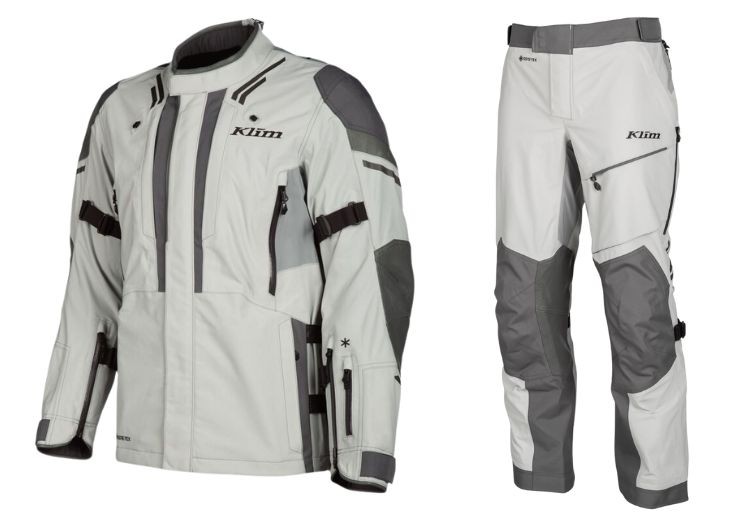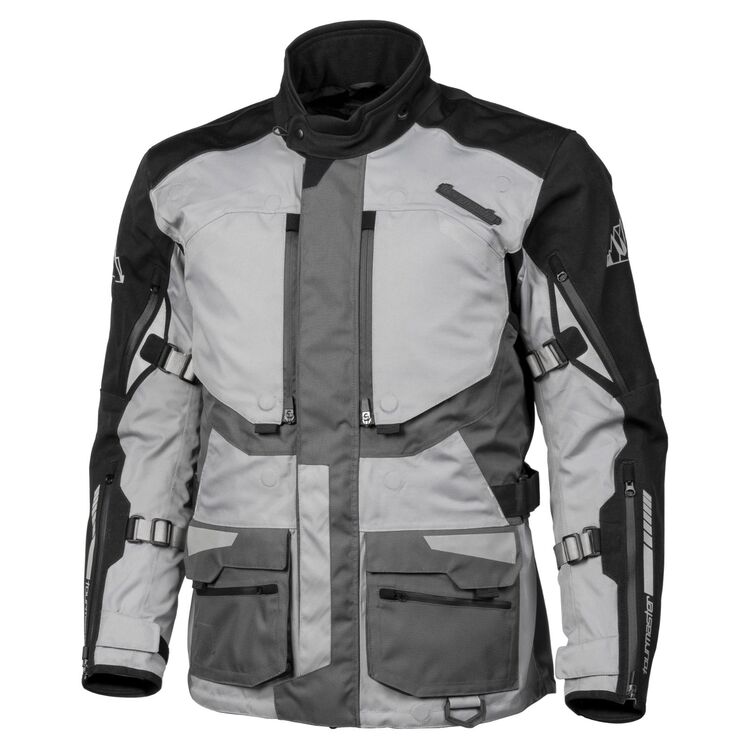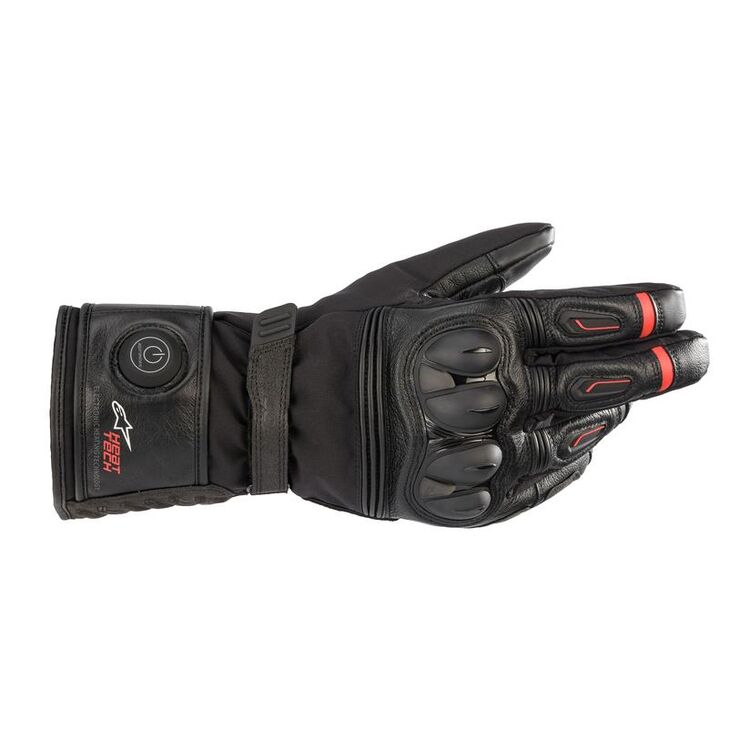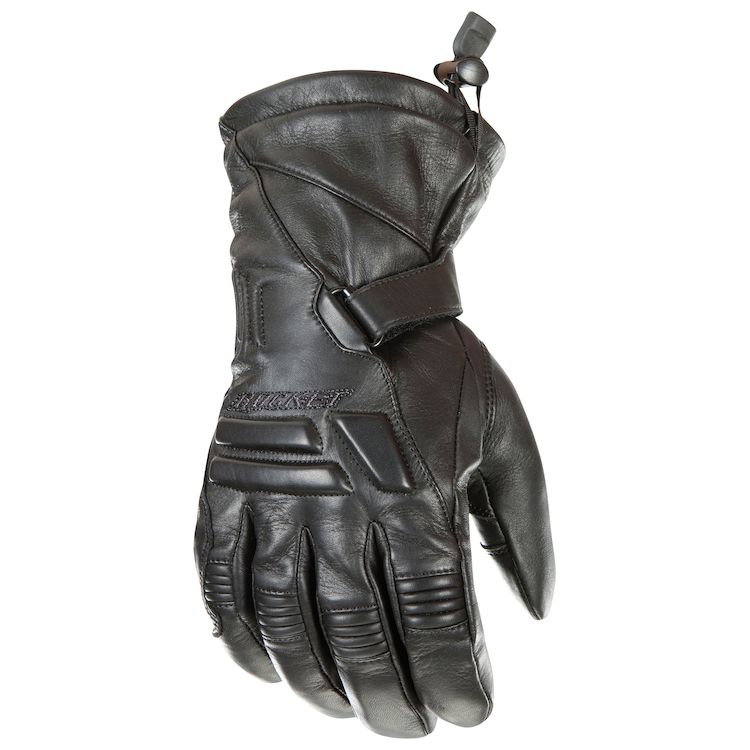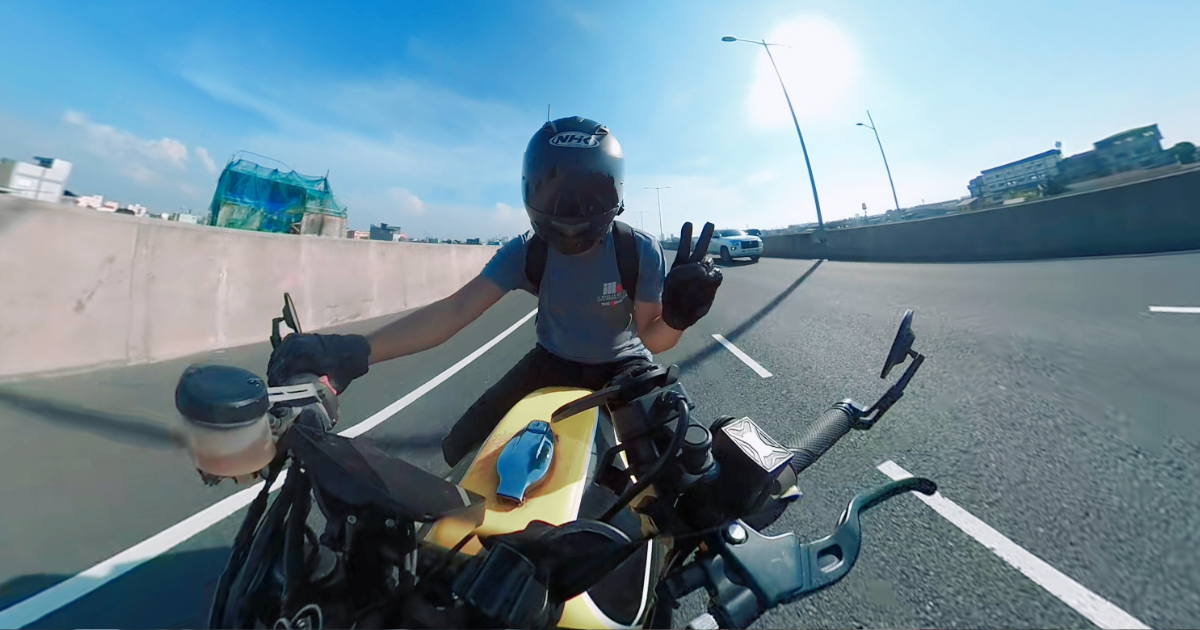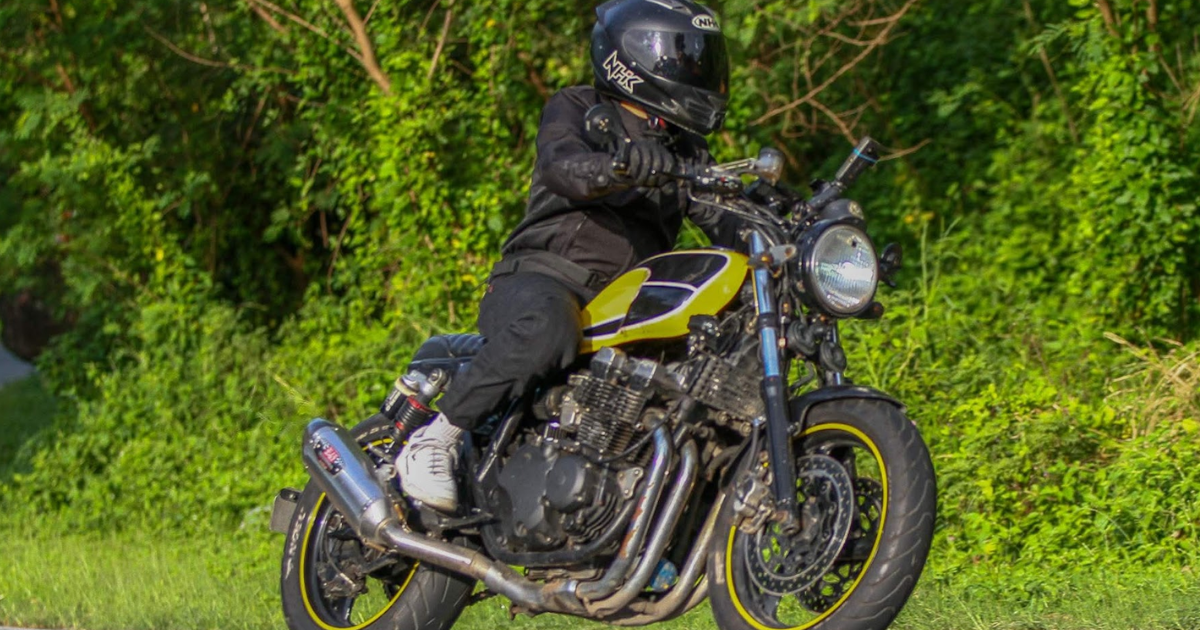
Stay Toasty: Cold-Weather Motorcycle Gear Guide
left for contents
Riding through a frosty dawn, feeling the bite of the wind through your jacket and the numbness creeping into your fingers, reminds you just how exposed motorcyclists really are. Cold mornings, sleet and icy rain can turn even the shortest commute into an ordeal.
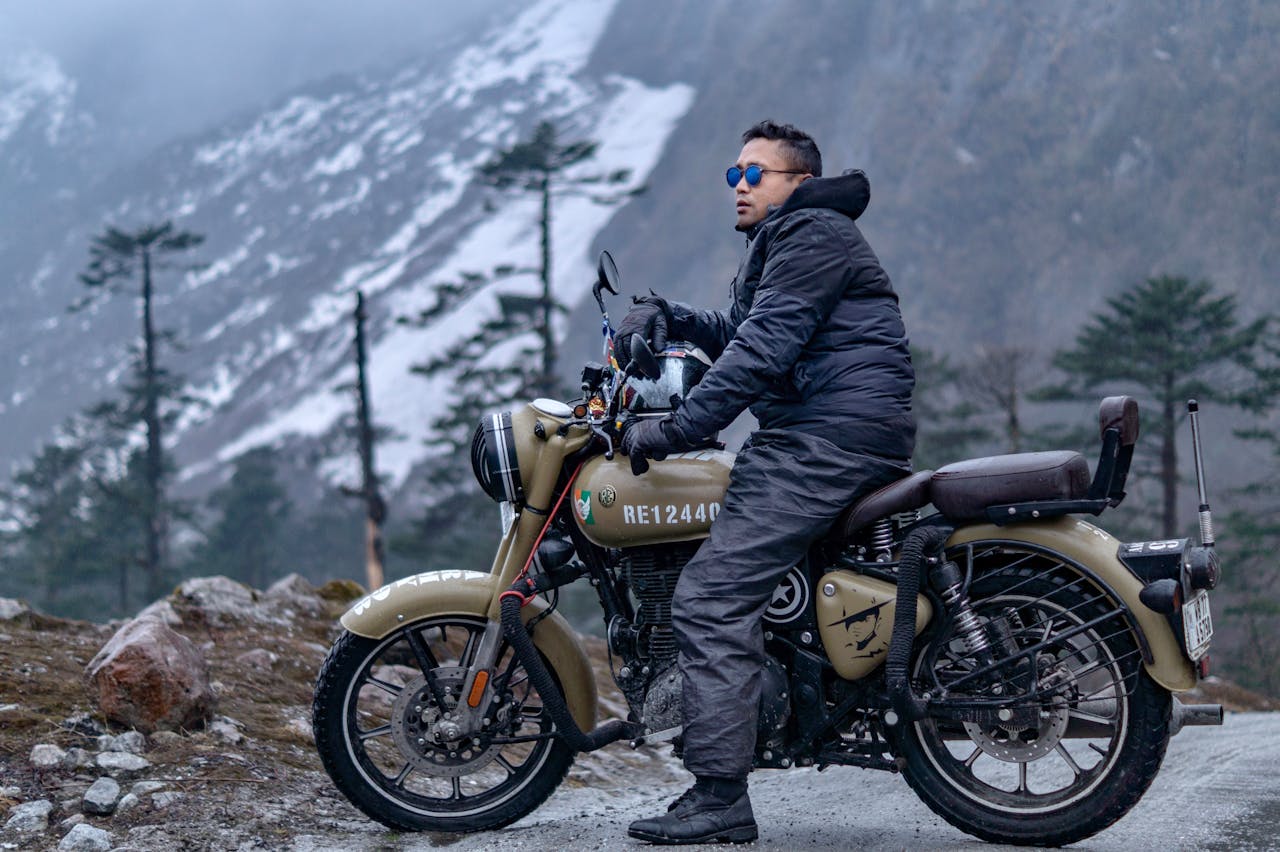
The right gear makes the difference between suffering through winter and actually enjoying the ride. As a gear reviewer who spends more time riding than sitting behind a desk, I’ve learned a few things that might surprise you.
- More insulation isn’t always better. Heavy, bulky liners can restrict movement and trap sweat, making you cold faster. Modern laminated shells and lightweight insulators often outperform thick gear in winter.
- Waterproof doesn’t mean the same thing for every garment. A jacket advertised as “water resistant” might hold out drizzle but soak through in a downpour. Look for laminated shells or Gore‑Tex membranes; taped seams and waterproof zippers are critical.
- Cheap gloves can ruin a pricey jacket. It only takes one weak link for water or cold to creep in. The wrong gloves funnel water down your sleeves or leave your fingers numb, even if the rest of your gear is top tier.
- You can layer the wrong way. Riding in heavy cotton undergarments will leave you soaked and freezing. A synthetic or merino base layer and a removable mid‑layer often outperform an expensive one‑piece insulated suit.
If those points hit home, you’re in the right place. This article breaks down what makes certain jackets, pants and gloves worth your money and which ride scenarios each item shines in. We’ll look at three jackets, one matching pant option and two sets of gloves, then finish with a comparison table and a cold‑weather buying guide.
My goal is to help you stay warm and safe without wasting money on gear that doesn’t live up to the hype.
Which Gear Fits Your Ride?
Every rider has a different winter commute. Adventure riders want laminated shells and heavy‑duty construction that shrug off crashes and days of rain. Commuters and touring riders need versatility — warm insulation for 40 °F mornings that doesn’t leave them sweating at noon. Budget‑conscious riders look for gear that balances protection and price. Heated gloves might seem like overkill until you spend an hour on the highway with numb fingers.
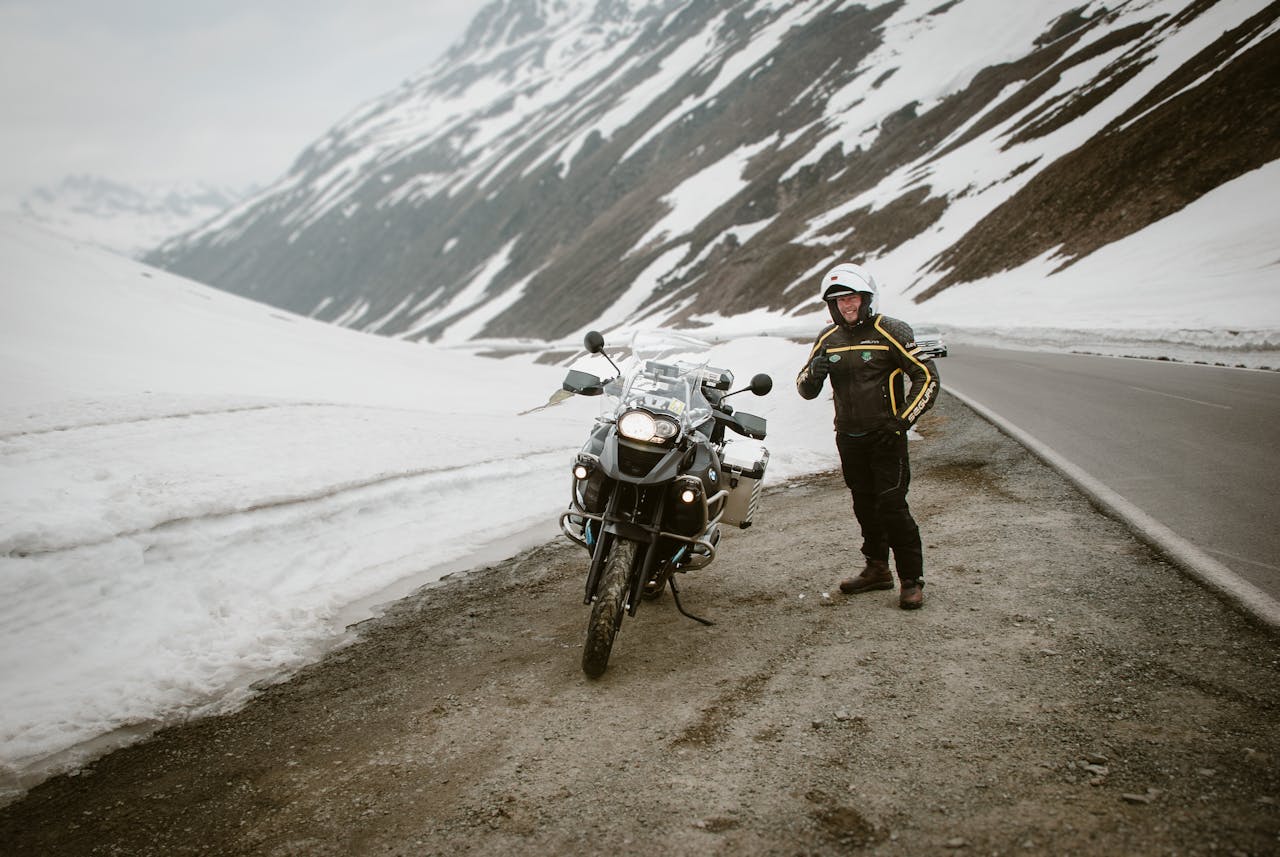
Below are our favorite cold‑weather pieces for 2025, split into categories so you can match them to your riding style. Each section mixes actual experience with hard facts from manufacturer specifications and independent tests.
Adventure & Touring Jacket: Sedici Garda Waterproof Jacket
What it is: The Sedici Garda is a mid‑priced laminated touring jacket aimed at riders who spend hours in the saddle through rain, sleet and wind. It’s built from 600‑denier laminated textile with 1200‑denier reinforcement on high‑impact zones, so it balances abrasion resistance and flexibility. All seams are taped, and waterproof zippers prevent leaks at vents and pockets. The jacket includes CE Level 2 shoulder and elbow armor and has a pocket for an optional back protector.
Why it works: Riders who pick the Garda appreciate how the laminated shell blocks cold winds and rain without turning into a soggy mess. On brisk morning commutes, the jacket seals in warmth; as the day warms up you can open its six direct‑body vents to dump heat and stay comfortable. The oversized zipper pulls are easy to grab with gloved hands, so you can adjust airflow while riding, whether you’re threading traffic on city streets or cruising back roads.
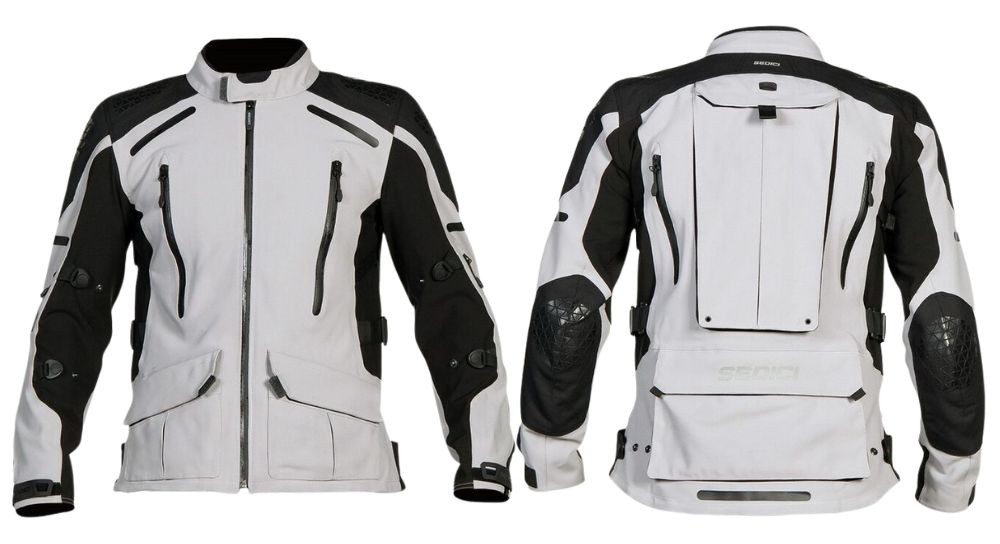
The Garda stands out because it doesn’t rely on a removable waterproof liner. Instead, the waterproof membrane is laminated directly to the shell. When you hit a rainstorm, water beads off and never soaks the outer fabric. That means the jacket doesn’t get heavy or clammy. The micro‑fleece collar and cuffs prevent chafing, and a hydration pocket behind the back protector slot lets you run a hose to your helmet, a feature adventure riders will appreciate.
Downsides and silver lining: The Garda’s laminated shell lacks the natural airflow of a mesh jacket, so in humid climates it can feel hot and stiff. The silver lining is that its stretch panels and adjustable waist straps relieve pressure when layered over bulky mid‑layers. If you ride primarily in warmer climates but need occasional rain protection, a lighter four‑season jacket like the Tourmaster Highlander below might suit you better.
A waterproof adventure/touring jacket built with stretch laminated 600D textile and strong reinforcement zones, offering rugged protection, good ventilation, and comfort for mixed-weather rides.
- Built with CE Level 2 armor at elbows & shoulders for impact safety
- Stretch panels help mobility while riding or reaching luggage
- Many vents and waterproof zippers for airflow and moisture control
- Multiple pockets and adjusters improve fit and storage options
- Vent zippers may leak in heavy or sustained rain
- Doesn’t include a back protector; one must be added separately
Our Take: The Sedici Garda WP Jacket gets a mention in our Best Motorcycle Jacket Brands roundup — check it out for more context.
Touring Pants: Sedici Garda Waterproof Pants
What they are: Designed as the matching lower half to the Garda jacket, these pants use the same 600‑denier laminated textile with 1200‑denier reinforcement at the seat and knees. Stretch panels at the knee, crotch and waist help maintain mobility, while a CE Level 2 knee protector cushions impacts and pockets allow optional hip armor. Large zipper vents on the thighs mirror the jacket’s ventilation system.
Why they work: The Garda pants simplify cold‑weather touring. The waterproof shell and fully taped seams kept my base layers bone dry during an unexpected hail storm. Because there’s no drop‑in waterproof liner, they’re relatively slim and easy to pull over jeans at a rest stop. The full‑length zippers on the lower leg make it easy to slide them over bulky adventure boots, and heat‑resistant panels prevent melting when you brush against a hot exhaust.
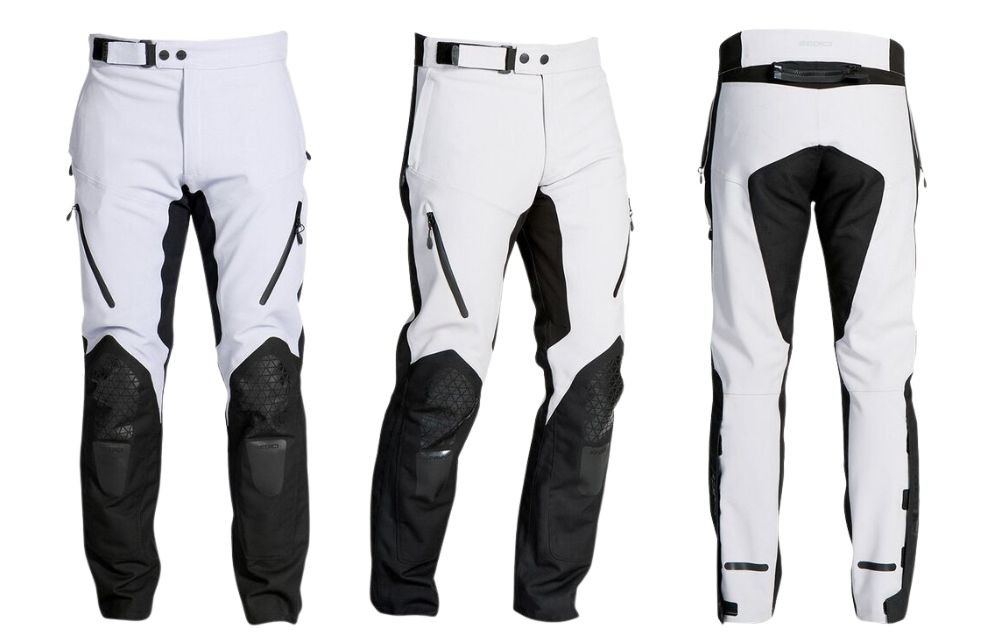
One standout feature is the cargo pocket on the thigh, big enough for a map or energy bar. It closes with a waterproof zipper and a storm flap, and you won’t worry about losing your wallet when climbing off the bike. Reflective piping around the knees and seat adds visibility in foggy conditions.
Downsides and alternatives: Like the jacket, these pants can feel stiff before breaking in. Some riders also wish they came with hip armor standard; you’ll need to buy that separately. If you want more ventilation and aren’t riding in torrential rain, consider Klim’s Latitude pants below — they cost more but offer better airflow.
Rugged laminated waterproof touring pants with reinforced 1200D in high-wear zones, CE Level 2 knee protection, and vents for airflow—ideal for mixed weather and ride types.
- High abrasion resistance in seat and knees with 1200D reinforcements
- CE Level 2 knee armor, adjustable in multiple positions
- Vent zippers and stretch zones provide comfort in hot weather
- Waterproof shell with taped seams keeps moisture mostly out
- Vent zippers leak during sustained heavy rain
- Limited length for taller riders—inseam runs short
Our Review: We haven’t published a dedicated Garda pants review yet, but our Best Waterproof Motorcycle Pants guide includes these and several alternatives with more detailed comparisons.
High‑End Touring/ADV Suit: Klim Latitude Jacket & Pants
What they are: Klim’s Latitude system is one step down from their expedition‑rated Badlands line but still aimed squarely at adventure and long‑distance touring riders. Both the jacket and pants use a two‑layer Gore‑Tex performance shell with 600‑denier Cordura overlays in the shoulders, knees, seat and cuffs. Perforated goat leather overlays on the elbows and inner knees add abrasion resistance and a premium feel. Stretch Gore‑Tex panels in high‑movement zones improve mobility.
Each piece comes with D3O Level 1 armor in the shoulders, elbows, back, hips and knees. Big pit vents and cuff vents dump heat quickly, and waterproof zippers ensure you can leave them open until the sky really opens up. The pants feature a dedicated wallet pocket with a hidden stretch sleeve for security, and both jacket and pants connect via a long zipper to prevent drafts.
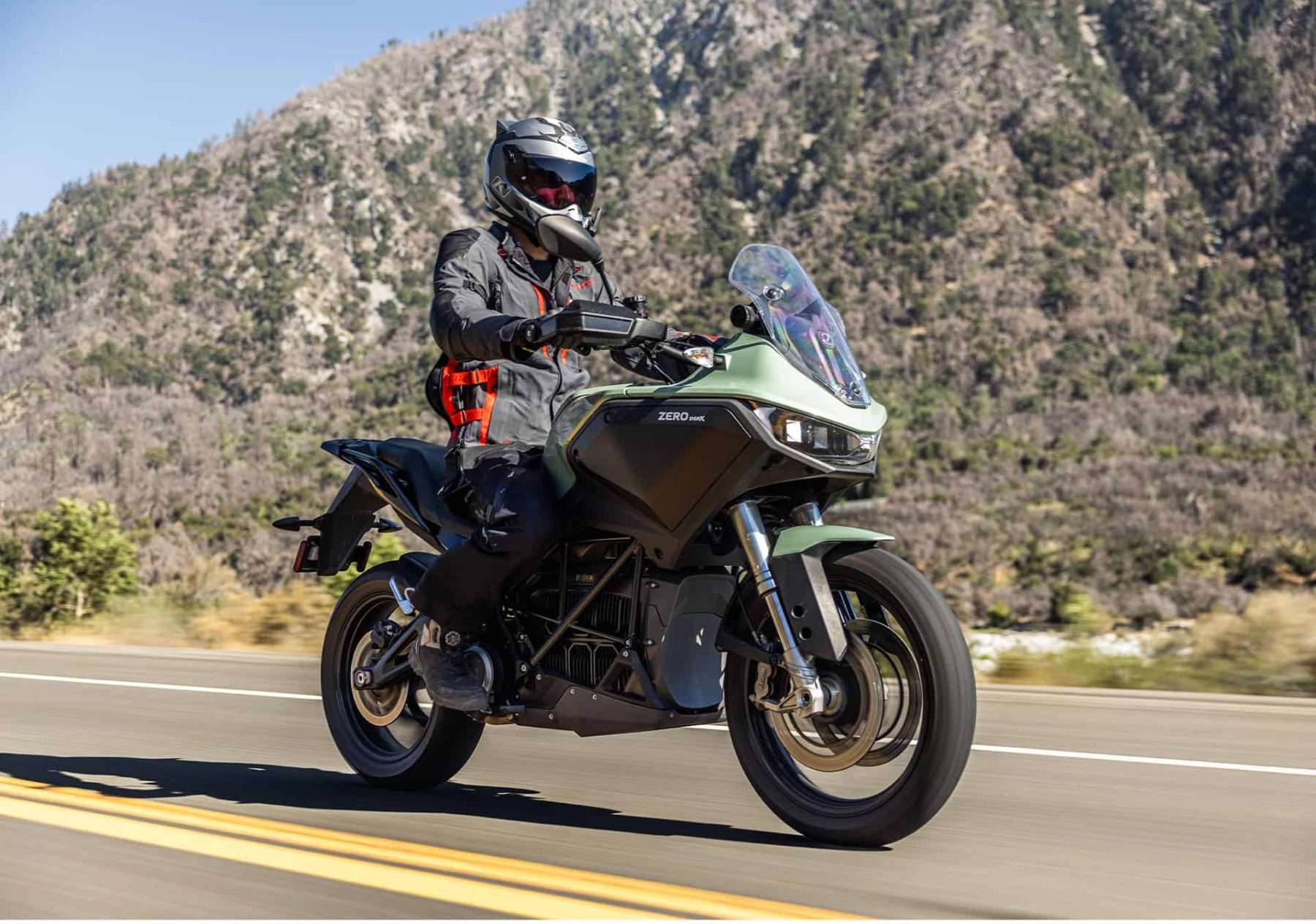
Why they work: The Latitude suit keeps riders comfortable across a wide temperature range. Its Gore‑Tex shell and dual cuff vents allow you to regulate heat and moisture on the fly, so you can stay warm during chilly 40 °F morning rides and open vents when temperatures climb toward the 90s. Because the waterproof membrane is laminated to the outer fabric, the suit doesn’t soak up rain, staying light even after hours in a downpour.
Off the bike, the Latitude jacket and pants are more flexible than Klim’s stiffer Badlands gear, making them comfortable for walking into a diner or exploring a roadside attraction. Multiple waterproof pockets keep your key fob, wallet and phone secure and dry, eliminating the need for extra zip‑loc bags
Downsides and alternatives: The Latitude is expensive — around $800 for the jacket and $650 for the pants. It’s also heavier than the budget Tourmaster below. If your budget allows and you ride year‑round, the investment makes sense because the suit could last a decade. If money is tight, the Sedici Garda offers much of the same waterproof performance for less, at the expense of some ventilation and refinement.
Klim’s Latitude suit blends Gore-Tex waterproofing, smart ventilation, and CE armor to deliver all-season touring protection and comfort.
- Keeps you dry in heavy rain
- Strong ventilation for hot rides
- D3O armor in key impact zones
- Stretch panels for easy movement
- Armor is only Level 1
Our Take: The Klim Latitude Jacket is briefly featured in our Winter Motorcycle Jackets guide — a solid place to see how it stacks up for cold-weather riding.
Value‑Focused Touring Jacket: Tourmaster Highlander WP Jacket
What it is: The Highlander is Tourmaster’s flagship cold‑weather touring jacket. It uses a heavy‑duty 1000‑denier nylon ripstop shell laminated with a waterproof/breathable membrane and treated with a durable water repellent (DWR) coating. Inside sits a 75‑gram removable thermal liner for warmth, and SAFE‑TECH CE Level 2 armor in the shoulders and elbows provides impact protection. A pocket holds an optional back protector.

Four‑way stretch panels in the shoulders and elbows help the heavy fabric move with you, and waterproof venting across the chest and back prevents overheating. Tourmaster uses strong magnets to secure vent flaps open so they don’t whip around at speed. Large hand pockets and two cargo chest pockets swallow gloves, snacks and small tools. Fit adjusters at the waist and arms tighten the shell over base layers.
Why it works: The Highlander’s 75‑gram thermal liner provides warmth for cold morning rides and removes easily when temperatures climb. Its heavy‑duty nylon shell inspires confidence without feeling restrictive, and four‑way stretch panels make shoulder checks and reaching the bars comfortable despite the robust build. Tourmaster also adds thoughtful touches like YKK zippers and reflective accents for durability and visibility.
A full-featured adventure jacket with a waterproof laminated shell, CE Level-2 armor, and a removable thermal liner—designed for serious riders who demand protection, warmth, and versatile venting.
- CE Level-2 armor with reinforced zones
- Removable full-sleeve thermal liner
- Waterproof laminated, seam-taped shell
- Wide size range with tall options
- Runs slightly large on fit
- Basic foam back protector
Downsides and silver lining: At nearly 8 pounds for the jacket alone, the Highlander is heavy. The weight translates into stability at highway speeds — the jacket doesn’t flap or buffet like lightweight shells. Still, if you want an ultra‑light touring shell, consider Klim’s Carlsbad or Marrakesh lines. The Highlander also lacks the refined venting of the Latitude; riders in very warm or humid climates may find it stuffy. On the flip side, that warmth is ideal for colder commuters who rarely ride above 70 °F.
Heated Touring/ADV Gloves: Alpinestars HT‑7 Heat Tech Drystar Gloves
What they are: The HT‑7 gloves combine Alpinestars’ Drystar waterproof membrane with an integrated heating system. The heat pads are controlled by a smart microprocessor that automatically activates when the glove detects contact with skin and turns off when you remove your hand. Riders can toggle between three heat settings via a button on the cuff or connect to a Bluetooth‑enabled smartphone app to fine‑tune the temperature. 7.4‑volt lithium batteries power the system and recharge via a Y‑cable included in the box.
The gloves feature PrimaLoft Gold insulation on the back of the hand, goat leather on the palm and back, and micro‑ripstop softshell on the cuff. Rolled fingertips improve heat retention and tactile feel, while a touchscreen‑compatible fingertip lets you operate a GPS or phone. The glove is certified to CE Level 1 knuckle protection thanks to a hard protector hidden under the leather.
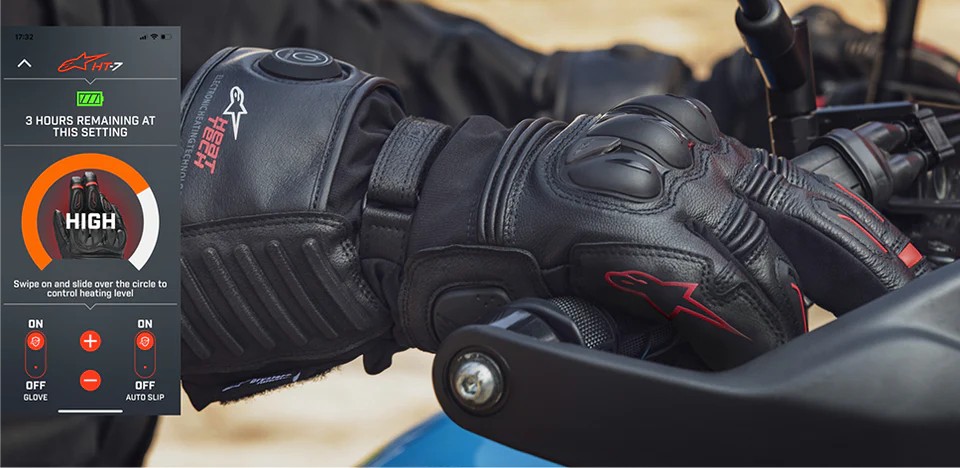
Why they work: Riders choose the HT‑7 gloves because their integrated heating system delivers warmth exactly where it’s needed. Heat pads run from the fingertips to the back of the hand and offer three settings, with typical battery life around three hours on medium. When the batteries finally run out, the combination of PrimaLoft Gold insulation and a Drystar waterproof membrane still keeps hands warm and dry.
These gloves excel for riders who refuse to let ice stop them. The ability to fine‑tune heat through an app sounds gimmicky but helps conserve battery when the temperature fluctuates throughout the day. A reflective piping on the cuff adds night‑time visibility.
Downsides and alternatives: Battery‑powered gloves can be bulky, and these are no exception. They feel stiffer than non‑heated options, and the batteries add weight around the wrist. However, the cuff is long enough to fit over jacket sleeves, sealing out drafts. If you prefer a lighter glove and ride shorter distances, the Joe Rocket Windchill gloves below are an affordable non‑heated alternative.
Heated winter gloves that combine Drystar waterproofing, auto on/off heat control, and rugged protection—designed to keep hands warm, dry, and safe in cold, wet conditions.
- Reliable warmth across fingers, backhand & knuckles
- Waterproofing holds up well even in bad weather
- Auto-activation, app/bluetooth control for ease of use
- Touchscreen-friendly fingertip and athletic fit when moving
- Bulky cuff and gloves can be tight to slip on over sleeves
- Battery life drops quickly on highest heat setting
Our Review: For more heated glove picks, check out our best heated motorcycle gloves guide.
Budget Winter Gloves: Joe Rocket Windchill Gloves
What they are: Joe Rocket’s Windchill gloves are a simple, cost‑effective cold‑weather solution. They’re made of supple drum‑dyed cowhide with a Dry Tech waterproof mid‑liner and 100‑gram Thinsulate insulation. A layer of high‑density foam covers the knuckles, and an extra leather patch reinforces the palm. Gel inserts in the palm reduce vibration, and pre‑curved fingers minimize hand fatigue.
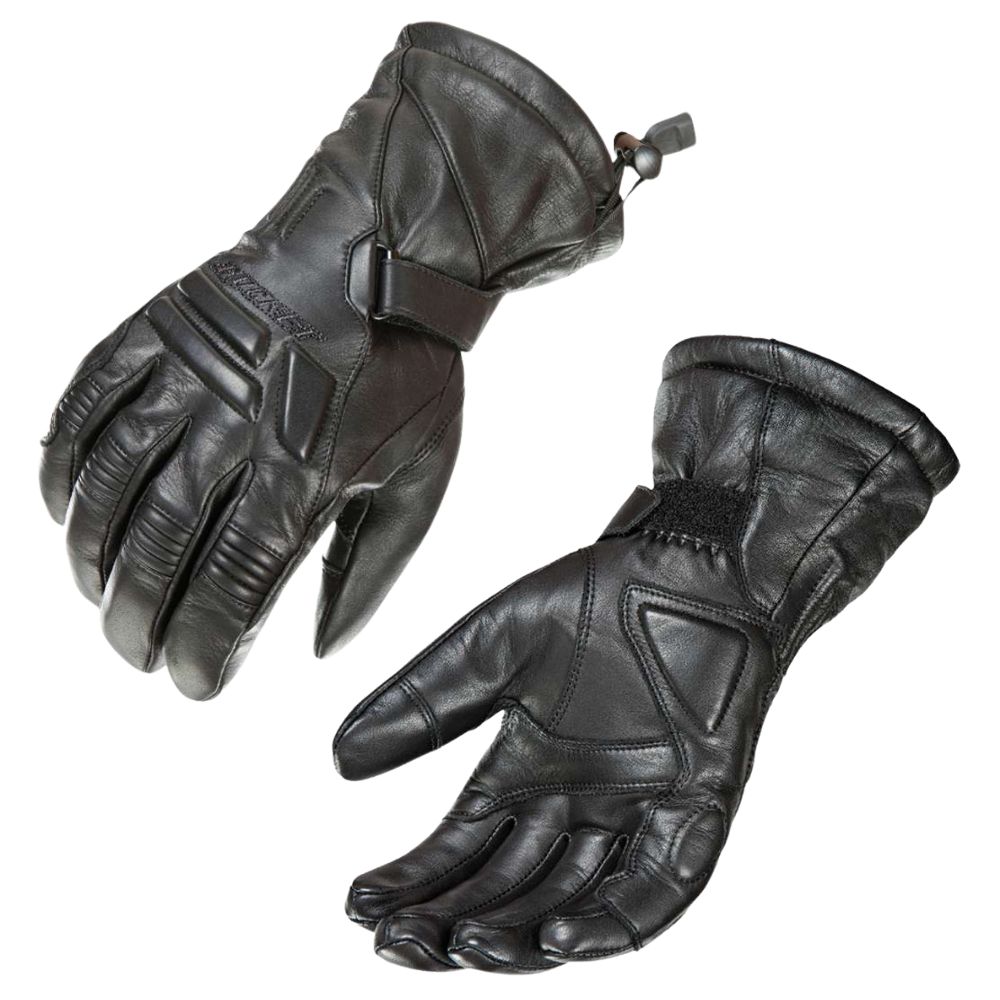
Why they work: Riders appreciate these gloves because they break in quickly and offer a good balance of feel and warmth. The leather outer sheds light rain and insulates well down to around 40 °F, while the FullFlex expansion panels on the fingers maintain dexterity for operating controls. A hook‑and‑loop wrist closure ensures a secure, adjustable fit that seals under or over jacket cuffs.
Downsides and silver lining: The Windchill gloves run small, so order a size up. They also lack the advanced armor of high‑end adventure gloves. On a positive note, the absence of bulky armor makes them more comfortable for street riding or commuting. If you want more protection and warmth, look at the heated HT‑7 or consider layering glove liners beneath the Windchills.
Reliable winter riding gloves combining cowhide leather, 100 g Thinsulate insulation, and waterproof lining to keep hands warm, dry, and responsive on cold commutes.
- Warmth holds up to sub‑freezing temps
- Fully waterproof Dry Tech liner
- Soft leather palm with vibration padding
- Knuckle protection without stiffness
- Pre‑curved design enhances throttle feel
- Fit runs small—consider sizing up
- Moderately bulky under thick jacket cuffs
Our Review: Check out our Best Motorcycle Gloves roundup for an in‑depth comparison of the Windchill with other budget‑friendly winter gloves.
Comparison Table
Below is a quick reference comparing the key specs of each product. Use it to narrow down your options before reading the more detailed buying guide. Remember that numbers don’t tell the whole story, so consider how each feature fits your riding style.
| Product | Type | Shell/Materials | Waterproofing | Armor | Special Features |
|---|---|---|---|---|---|
| Sedici Garda Jacket | Touring/ADV Jacket | 600D laminated textile; 1200D reinforcements | Laminated waterproof shell, taped seams, waterproof zippers | CE Level 2 shoulders & elbows; optional back | 6 direct‑body vents; hydration pocket; stretch panels; micro‑fleece collar |
| Sedici Garda Pants | Touring/ADV Pants | 600D laminated textile; 1200D seat/knees | Laminated waterproof shell, taped seams | CE Level 2 knees; hip pockets for optional armor | Zippered thigh vents; full‑length leg zips; heat‑resistant panels |
| Klim Latitude Jacket | Premium Touring/ADV Jacket | 2‑layer Gore‑Tex shell; 600D Cordura & goat leather overlays | Gore‑Tex laminated; waterproof zippers | D3O Level 1 shoulders, elbows & back | Dual cuff vents; stretch Gore‑Tex panels; numerous waterproof pockets |
| Klim Latitude Pants | Premium Touring/ADV Pants | 2‑layer Gore‑Tex shell; 600D Cordura & goat leather overlays | Gore‑Tex laminated; waterproof zippers | D3O Level 1 hips & knees | Stretch panels; dual thigh vents; secure wallet pocket |
| Tourmaster Highlander Jacket | Budget Touring Jacket | 1000D ripstop nylon; waterproof laminate | Laminated shell; DWR coating | CE Level 2 shoulders & elbows; optional back | 75 g removable thermal liner; four‑way stretch panels; magnetic vent flaps |
| Alpinestars HT‑7 Gloves | Heated Touring Gloves | Goat leather & softshell; PrimaLoft Gold insulation | Drystar waterproof membrane | CE Level 1 knuckle protection | Integrated heating system with 3 settings; smartphone app; rolled fingertips |
| Joe Rocket Windchill Gloves | Budget Winter Gloves | Drum‑dyed cowhide with reinforcement | Dry Tech waterproof mid‑liner | Foam knuckle padding; gel palm | Pre‑curved fingers; FullFlex expansion panels; 100 g Thinsulate insulation |
Buying Guide: How to Choose Cold‑Weather Motorcycle Gear
Understand the Three‑Layer System
When temperatures drop, your gear has to do more than stop rain. It needs to manage moisture, insulate and protect. Our Layering Masterclass dives deep into this concept, but here’s the short version: you need a base layer that wicks sweat, a mid‑layer that traps heat and an outer layer that blocks wind and abrasion. Cotton kills; choose synthetic or merino wool for the base. Mid‑layers can be fleece, down or synthetic insulations like PrimaLoft or Thinsulate. The outer shell should be waterproof and abrasion‑resistant.
Decide on Laminated vs. Drop‑In Waterproofing
Laminated shells (as seen in the Sedici Garda, Klim Latitude and Tourmaster Highlander) have the waterproof membrane bonded directly to the outer fabric. They stay lighter because water can’t soak into the face fabric. Laminated jackets usually cost more but dry quickly and are better for long rides.
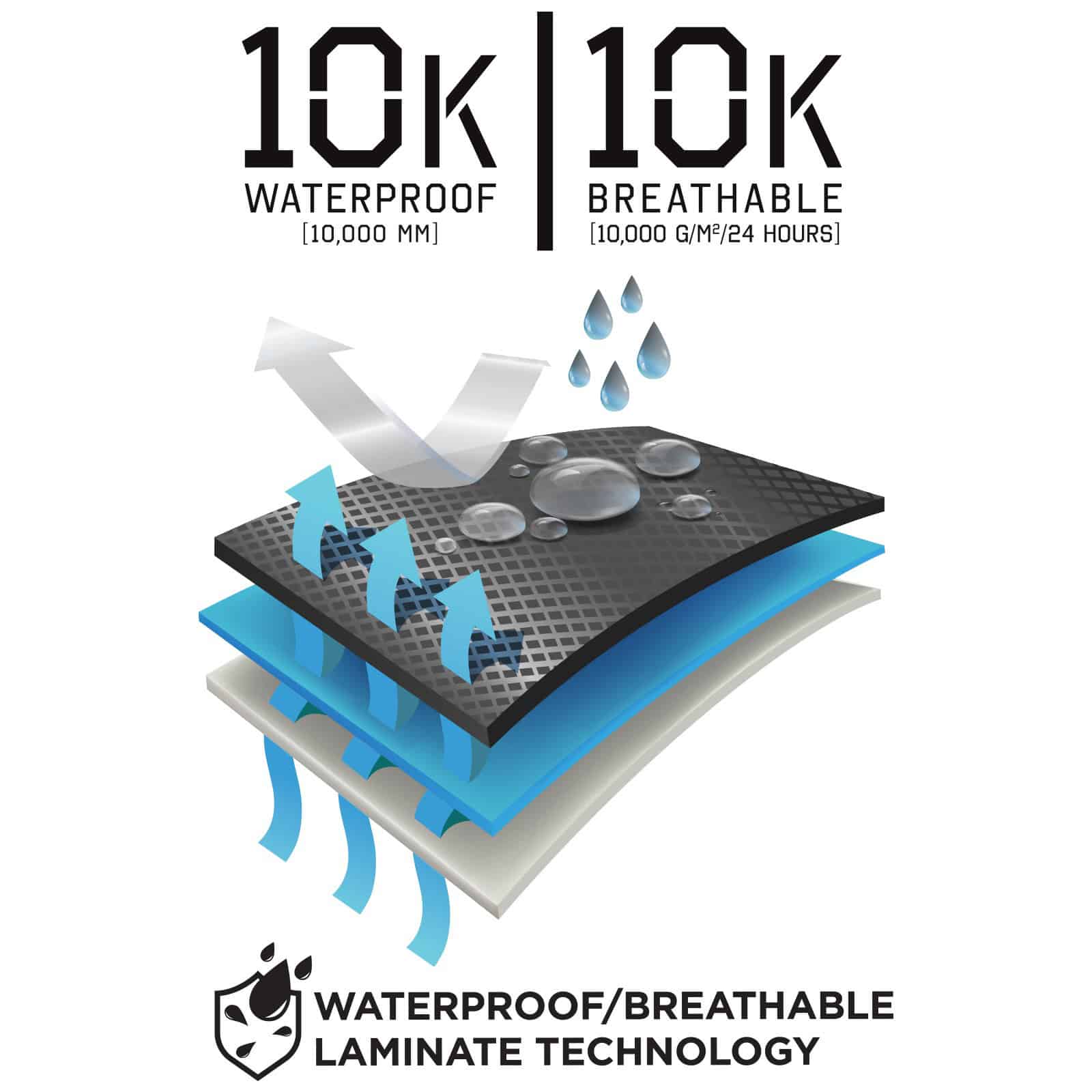
Drop‑in liners are cheaper and can be replaced or removed but allow the outer shell to become saturated, leading to extra weight and evaporative cooling.
If you ride in heavy rain or for hours at a time, pay extra for a laminated shell.
Check the Armor Rating
CE ratings indicate how much impact protection a piece of armor offers. Level 2 armor (found in the Sedici Garda and Tourmaster Highlander jackets) absorbs more energy than Level 1 armor (used in Klim’s Latitude suit). Level 1 is slimmer and more flexible, which can improve comfort and airflow. Consider your crash risk and comfort level when deciding which is better for you. Some gear comes with Level 1 armor but has pockets to upgrade to Level 2.
Ventilation Matters Even in Winter
It sounds counter‑intuitive, but proper ventilation is crucial in cold weather. Without vents, sweat builds up inside your jacket and base layers. When you stop, moisture evaporates and steals heat from your body, leading to chills. Look for direct‑body vents that let air reach your torso or armpits and can be closed quickly when the weather turns. The Klim Latitude’s dual cuff vents and the Sedici Garda’s six direct‑body vents are great examples. Even the Tourmaster Highlander has waterproof chest and back vents held open with magnets for convenience.
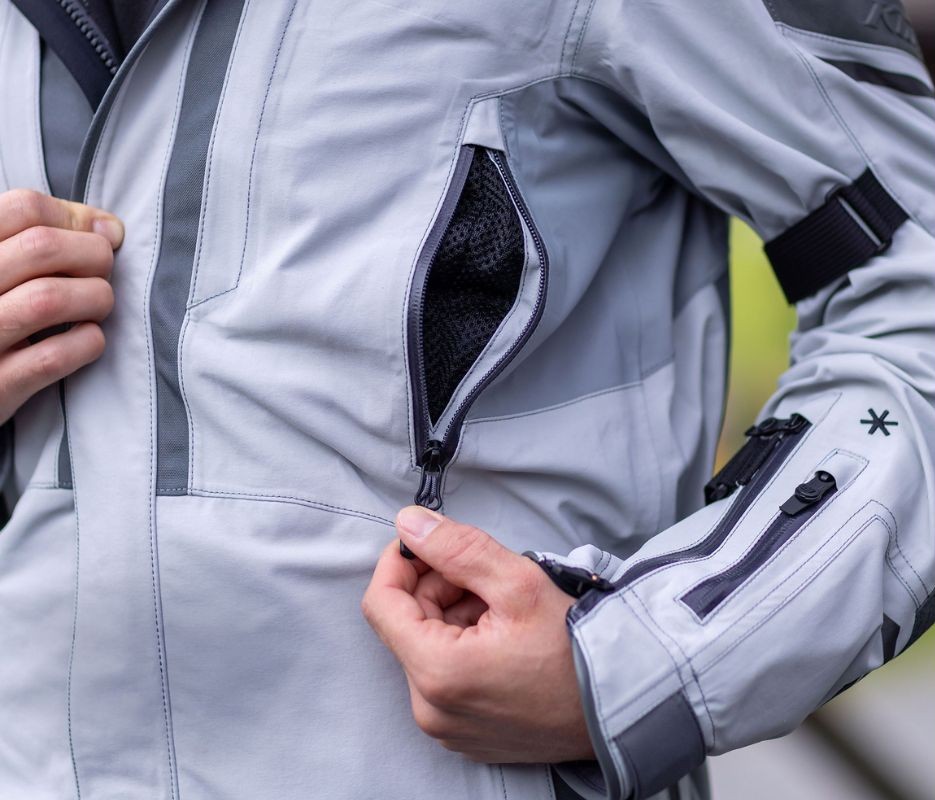
Don’t Neglect Gloves
Your hands are exposed to wind and rain, and cold fingers hamper clutch and brake control. Heated gloves like the Alpinestars HT‑7 let you dial in warmth, while insulated leather gloves like the Joe Rocket Windchill offer a simple solution at a lower price point. Remember, gloves need to integrate smoothly with your jacket — gauntlet styles go over cuffs to keep water out, while short cuffs can tuck inside jacket sleeves for a sleeker feel. Always test how the glove and jacket interact before committing to a purchase.
Fit and Adjustability Are Key
Cold‑weather gear must fit over base and mid‑layers without restricting movement. Look for jackets and pants with adjustable waist belts, sleeve gussets and stretch panels. Too loose, and wind will funnel in; too tight, and you’ll restrict blood flow, making you colder. If possible, try gear on with the layers you intend to wear underneath.
Build Your Kit Based on Your Riding Style
- Commuters and weekend riders: The Tourmaster Highlander jacket paired with Joe Rocket Windchill gloves makes an affordable, warm combination. Add a base layer and you’re set for 30‑minute rides in the 40s.
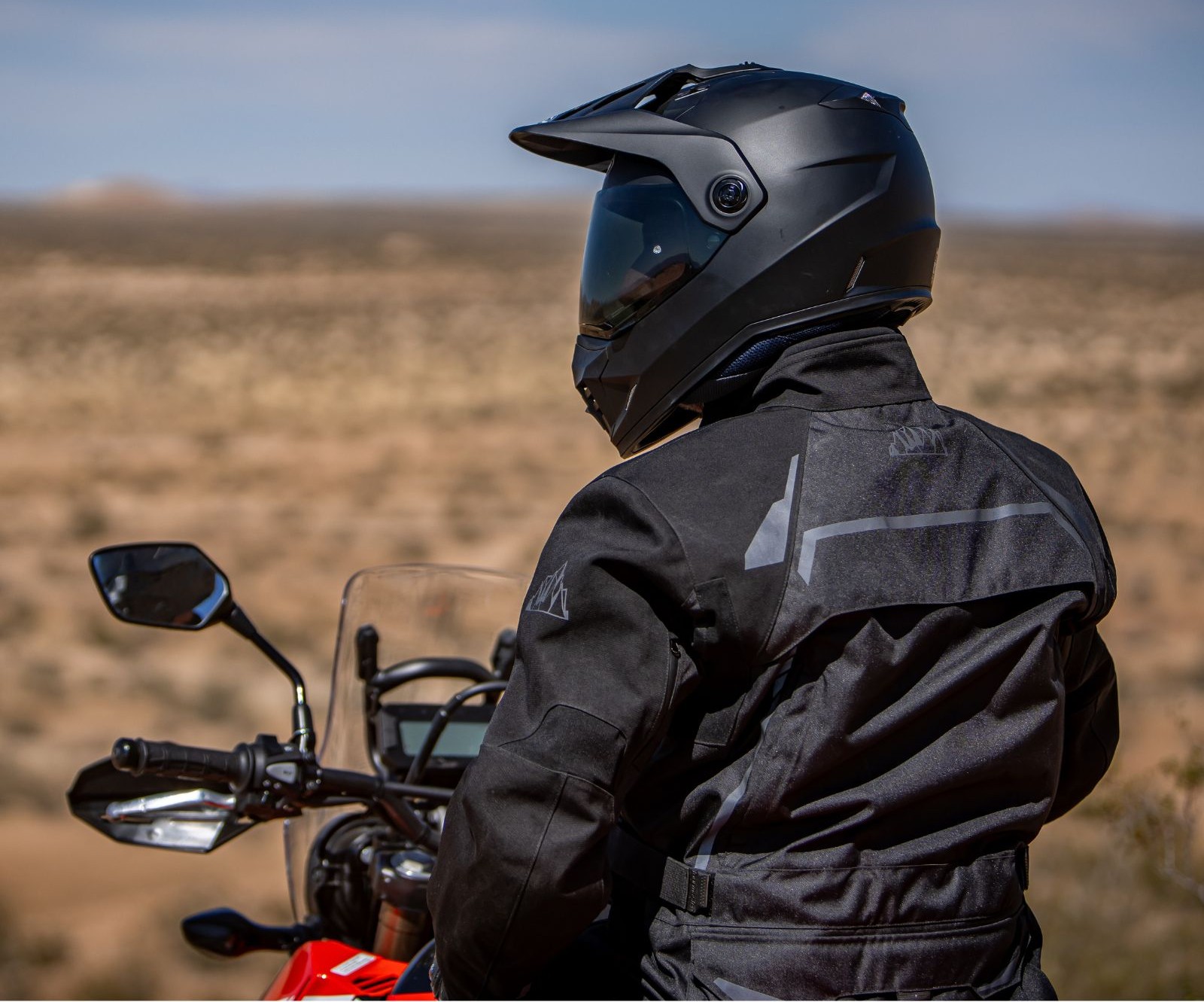
- Touring and adventure riders on a budget: The Sedici Garda jacket and pants provide laminated waterproof protection, Level 2 armor and decent ventilation for less than half the cost of a high‑end Gore‑Tex suit. Add heated gloves if you’re out for long winter days.
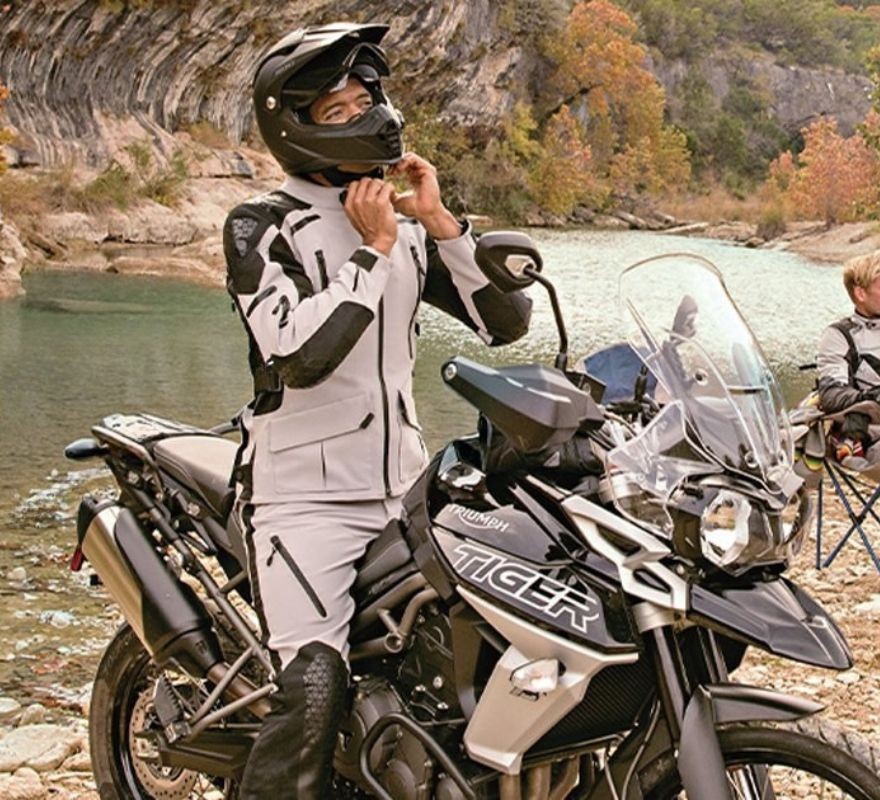
- All‑season, all‑terrain explorers: Invest in the Klim Latitude suit if you ride thousands of miles each year or need gear that handles everything from mountain passes to desert heat. Pair with Alpinestars HT‑7 heated gloves for complete cold‑weather coverage.
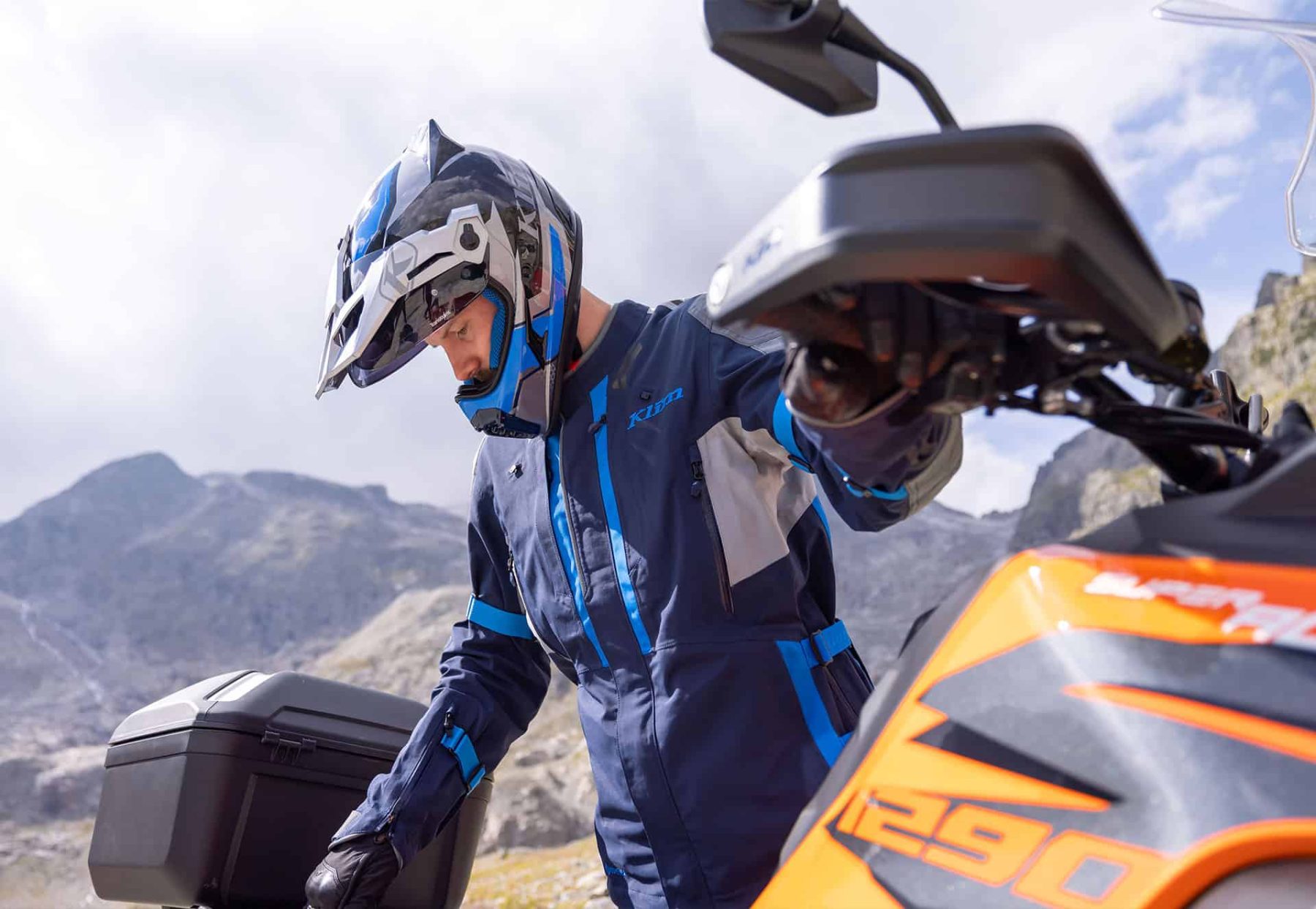
Final Thoughts
Cold‑weather riding isn’t about grinning and bearing it — it’s about choosing gear that works together. A laminated shell keeps you dry, a good mid‑layer traps heat, and high‑quality gloves keep your fingers nimble.
Each product in this guide does something especially well: the Sedici Garda balances price and performance, Klim’s Latitude delivers premium comfort and longevity, Tourmaster’s Highlander offers affordable warmth, and the HT‑7 and Windchill gloves keep your hands working when temperatures drop.
Build your kit with your own ride in mind and you’ll stay warm, safe and ready for whatever winter throws at you.
Related

Best Adventure Motorcycle Gloves: Protection You Can Trust
Find adventure motorcycle gloves that handle dirt, pavement, and weather—tested protection for riders who refuse to compromise.

